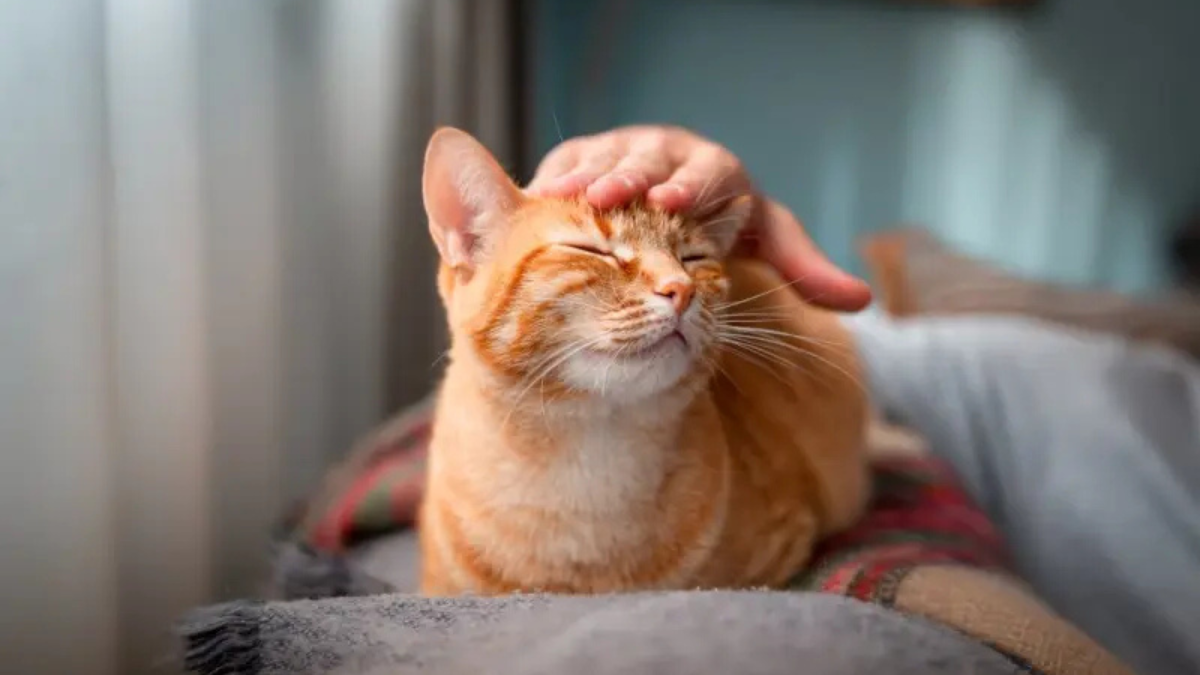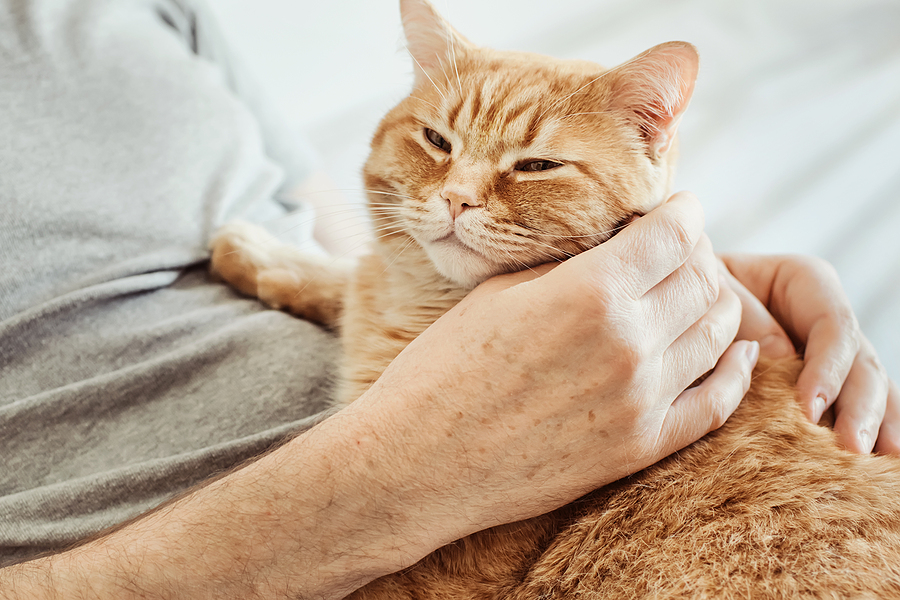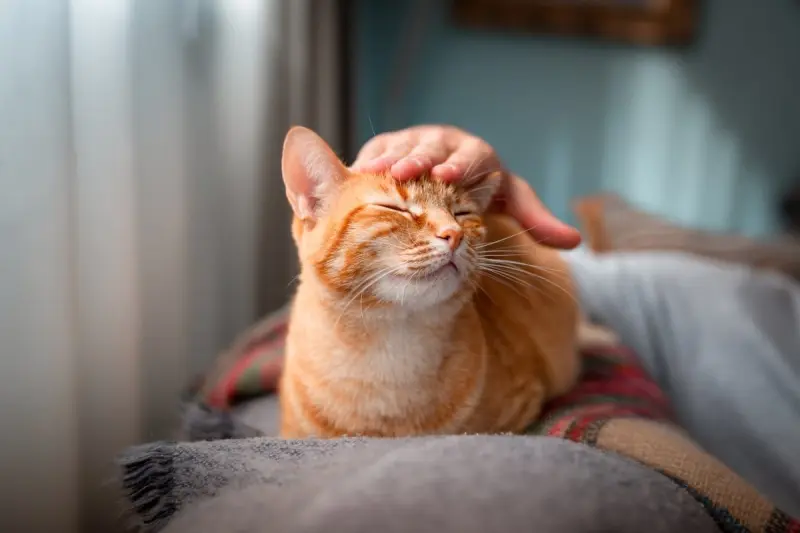📖 Table of Content:
For cat owners, the sound of a cat purring is often a comforting and familiar background noise. Whether your feline companion is curled up in your lap, lounging in a sunbeam, or snuggling up after a long day, the sound of purring is often seen as a sign of contentment and relaxation. However, as much as we associate purring with happiness, there’s an evolutionary twist behind this behavior that goes far beyond just a sign of pleasure.
A recent expert study has shed light on a fascinating and surprising reason behind why cats purr, and it’s not just about feeling comfortable. While purring might seem like a simple behavior, the true reason for it might make you rethink your understanding of feline communication.
The Evolutionary Function of Purring
According to experts, the true evolutionary reason behind why cats purr is deeply rooted in survival and self-healing, rather than simply a way to express happiness. It turns out that purring, particularly in wild cats, serves a critical function: it helps them to heal and regenerate their bodies, especially after injury. This unique ability to purr may have developed as a biological mechanism to aid in healing broken bones, wounds, or other injuries that cats might sustain in the wild.
The frequency of a cat’s purring vibrations, which range from 25 to 150 Hertz, is the key to this fascinating process. Research has shown that vibrations in this frequency range have healing properties, promoting the growth of bone and tissue and even reducing pain and inflammation. This ability helps cats recover more quickly and efficiently from physical trauma, allowing them to return to their normal activities without the long downtime that other animals might experience.
Purring as a Healing Mechanism
What makes this phenomenon particularly remarkable is the fact that this self-healing function is not exclusive to domestic cats. In the wild, big cats such as lions, tigers, and leopards also exhibit purring-like behaviors, especially in moments of rest or recovery. While these larger cats don’t purr in the same way domestic cats do—lacking the distinct vibration and sound—they still engage in similar vocalizations that have been linked to healing and recovery.
The healing vibrations associated with purring have also been shown to promote the production of growth factors like osteoblasts, which are responsible for bone healing and regeneration. This could explain why cats are so good at bouncing back from injuries. Whether it’s a small scratch or a more significant injury, purring helps accelerate their recovery process, making them resilient hunters and survivors in the wild.
Purring for Communication and Bonding
While the evolutionary reason behind purring is centered around physical recovery, domestic cats have adapted their purring to serve as a form of communication and bonding with humans. Purring is commonly associated with affection, contentment, and relaxation in cats, and it is one of the key behaviors that strengthen the bond between cats and their human companions. When a cat purrs in your presence, it is not just expressing comfort or satisfaction—it is also reinforcing its connection to you.
Interestingly, cats don’t only purr when they’re feeling happy or relaxed. They often purr when they are in pain, frightened, or anxious. This suggests that purring can also serve as a way for cats to comfort themselves, reducing stress and promoting a sense of safety. When a cat purrs while injured or scared, it may be using the healing power of its purr to ease its discomfort and cope with its emotions.
Moreover, it’s not just humans that benefit from this behavior. Cats also purr to communicate with other animals, especially their mothers or other cats within their territory. Kittens are known to begin purring shortly after birth, signaling their presence to their mothers and strengthening the mother-offspring bond.
A Unique Advantage for Cats
The fact that cats have evolved this remarkable ability gives them a distinct advantage in terms of survival. In the wild, predators need to be quick to recover from injuries to continue hunting and protecting themselves. The purring vibrations serve as an incredibly effective tool to keep cats at their best, physically and mentally.
Moreover, because the frequency range of purring promotes bone density and muscle strength, it could potentially aid in preventing age-related injuries as well. Senior cats, especially those who have spent a lot of time outdoors or who have sustained injuries over their lives, benefit greatly from the self-repairing properties of their purrs. It’s as if the cat’s body was designed to take care of itself in the best way possible.
For pet owners, this fact adds another layer of appreciation for their cats. Understanding that the sound of purring goes beyond just a comforting sound and actually contributes to their overall well-being underscores how truly special this behavior is. It also explains why cats may spend a large portion of their day purring, particularly when they’re resting or grooming.
Why Your Cat Purrs and When to Be Concerned
While purring can often be a sign of a happy, relaxed cat, it’s important to recognize that not all purring is a clear sign of contentment. If your cat is purring and exhibiting signs of discomfort, such as hiding or avoiding movement, it could indicate that they are in pain or distress. This is why it’s important to pay attention to your cat’s overall behavior in addition to their purring.
If your cat suddenly starts purring excessively or becomes very quiet and withdrawn, it may be worth checking in with a veterinarian. Cats are skilled at hiding pain, and excessive purring can sometimes indicate that your pet is in distress and using their purring to self-soothe.
A Unique Gift from Evolution
Ultimately, the true reason why cats purr is a testament to the incredible ways in which evolution has shaped their survival strategies. It’s not just a comforting noise or a sign of affection—purring is an ancient tool that helps cats heal, recover, and thrive in a challenging world. It’s this unique evolutionary trait that makes cats not only fascinating creatures to observe but also resilient beings with remarkable capabilities.
So, the next time you hear your cat purring softly beside you, take a moment to appreciate the deeper, healing purpose behind that sound—it’s more than just contentment; it’s nature’s way of keeping them at their best.


